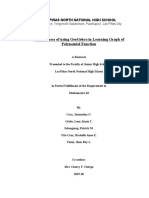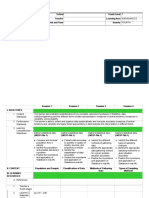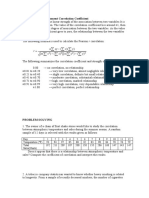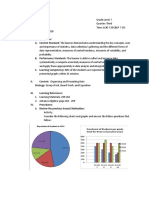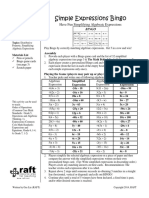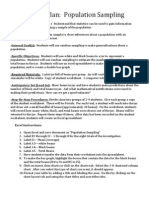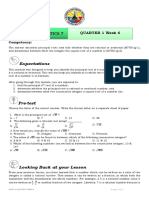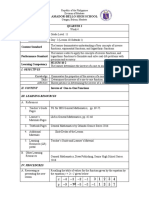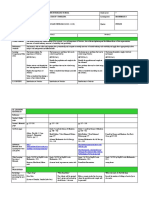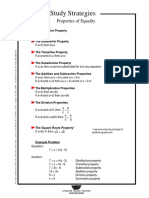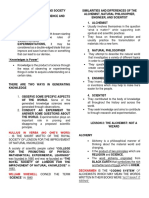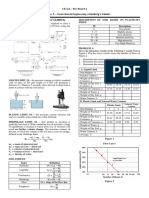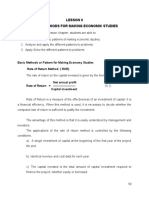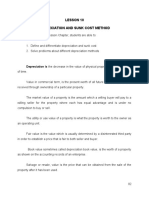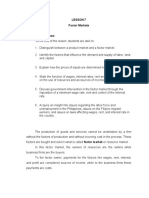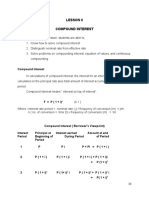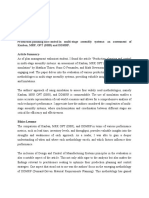0% found this document useful (0 votes)
1K views11 pagesLesson 2: Data Collection and Presentation Learning Objectives
This document discusses methods for collecting and presenting data. It covers probability and non-probability sampling techniques, constructing frequency distribution tables, and different graphical presentations like histograms, pie charts, bar graphs and more. The key methods of data collection are direct interviews, questionnaires, documentary analysis, observation, and experiments. Probability sampling includes simple random sampling, systematic sampling, stratified sampling, cluster sampling, and multistage sampling, while non-probability sampling covers purposive sampling, quota sampling, and convenience sampling. Data can be presented textually, in tables, or through various graphs.
Uploaded by
Daniela CaguioaCopyright
© © All Rights Reserved
We take content rights seriously. If you suspect this is your content, claim it here.
Available Formats
Download as DOCX, PDF, TXT or read online on Scribd
0% found this document useful (0 votes)
1K views11 pagesLesson 2: Data Collection and Presentation Learning Objectives
This document discusses methods for collecting and presenting data. It covers probability and non-probability sampling techniques, constructing frequency distribution tables, and different graphical presentations like histograms, pie charts, bar graphs and more. The key methods of data collection are direct interviews, questionnaires, documentary analysis, observation, and experiments. Probability sampling includes simple random sampling, systematic sampling, stratified sampling, cluster sampling, and multistage sampling, while non-probability sampling covers purposive sampling, quota sampling, and convenience sampling. Data can be presented textually, in tables, or through various graphs.
Uploaded by
Daniela CaguioaCopyright
© © All Rights Reserved
We take content rights seriously. If you suspect this is your content, claim it here.
Available Formats
Download as DOCX, PDF, TXT or read online on Scribd
/ 11











